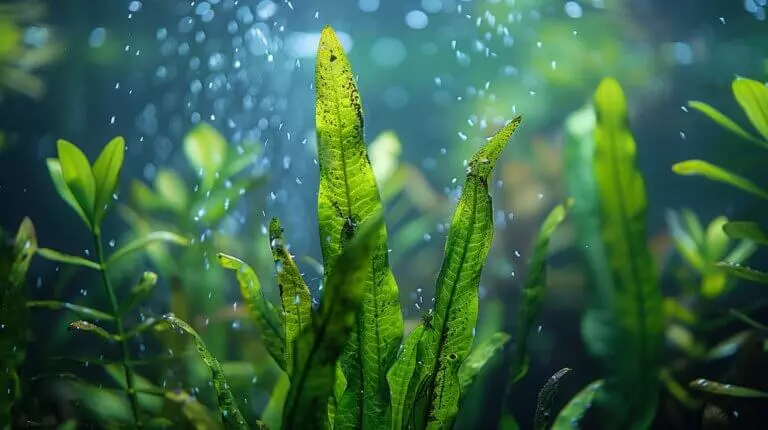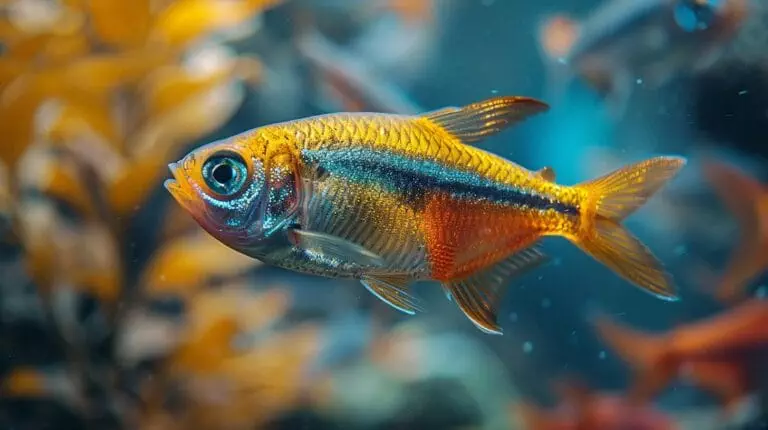When we’re setting up an aquarium for Paradise Fish, choosing the right tank mates becomes essential to maintain a peaceful environment. We can’t just pair them with any fish, given their unique temperament and territorial nature. It’s important to choose tank mates that are peaceful and can withstand the occasional aggressive behavior of Paradise Fish. Good options for tank mates include other peaceful community fish like Mollies, Platies, and Corydoras. It’s also important to provide plenty of hiding spots and visual barriers within the tank to help reduce potential conflicts. As for the question “do fish play”, while fish don’t play in the same way that mammals do, they do exhibit playful behaviors such as chasing each other, exploring their environment, and engaging in social interactions with other fish.
So, which fish make the best companions for these vibrant creatures? Barbs, danios, and larger tetras often top the list, but there’s more to ponder. How do we guarantee these species can coexist without causing stress or aggression? Let’s explore the best strategies for creating a harmonious aquatic community.
Key Takeaways
- Choose tank mates like barbs, danios, and larger tetras for compatibility.
- Avoid slow-moving or long-finned fish to prevent aggression from paradise fish.
- Rearrange the tank layout before introducing new fish to reduce territorial behavior.
- Provide ample hiding spots to allow all fish to retreat and feel secure.
- Add new fish during feeding times to distract paradise fish and ease introductions.
Understanding Paradise Fish: Habitat, Temperament and Gender Differences

To fully understand paradise fish, it’s essential to explore their natural habitat, temperament, and the differences between genders. Native to the slow-moving waters of East Asia, Paradise fish are hardy creatures that adapt well to various conditions. They are territorial and can be combative, particularly the males, which we need to consider when choosing tank mates.
Understanding gender differences is also vital. Male paradise fish are typically larger and more colorful, with elongated fins that they use to assert dominance. Females are less vivid, which can affect pairing decisions.
Care and Keeping: Essential Tips for Paradise Fish Care

Proper care for our paradise fish involves providing ample space, maintaining optimal tank conditions, and ensuring a varied diet. Regular monitoring for signs of illness and quarantining new fish before adding them to the main tank can also help reduce the risk of disease spread.
Here are some essential tips for paradise fish care:
- Ensure a minimum tank size of 20 gallons.
- Maintain water temperature between 70°F to 82°F.
- Provide a varied diet including flake food and live or freeze-dried options.
- Regularly monitor for common diseases like ich and fin rot.
- Quarantine new fish to prevent disease spread.
Identifying Compatible Paradise Fish Tank Mates

When selecting tank mates for our paradise fish, we must consider factors like temperament, size, and environmental needs. Ideal companions include species like barbs, danios, and larger tetras that are similar in size and can hold their own without being overly aggressive. It’s important to avoid putting other, smaller, peaceful species in the tank as they may become targets for the paradise fish’s aggression. When it comes to identifying comet goldfish genders, it can be tricky, as they do not have obvious external differences between males and females. However, one way to determine the gender is by observing their behavior, as males tend to chase females during spawning season. Another method is to inspect the fish’s vent area, as males have a slightly concave vent while females have a more rounded and fuller vent.
Introducing new tank mates can lead to conflicts, but strategies like rearranging the tank’s layout and providing ample hiding spots can mitigate this.
Breeding Paradise Fish: A Comprehensive Guide

Breeding paradise fish successfully requires careful attention to their environment and behavior. To achieve a thriving spawn, we need to create an ideal breeding Tank Setup with gentle filtration and plenty of hiding spots. The breeding tank should be kept at around 75°F to 80°F, with regular water changes and high-quality food to condition the pair.
Here’s what we should focus on:
- Temperature: Keep the breeding tank at around 75°F to 80°F to encourage spawning.
- Water Quality: Maintain pristine water conditions with regular changes.
- Feeding: Offer high-quality live or frozen foods to condition the pair.
- Lighting: Provide subdued lighting to mimic their natural habitat.
- Tank Setup: Include floating plants where the male can build his bubble nest.
Once the male and female are introduced to the breeding tank, observe their interactions. The male will build a bubble nest, and after courtship, the female will lay eggs. After spawning, it’s important to remove the female to prevent aggression. The male will guard the nest until the fry hatch.
As the fry grow into juveniles, we must make sure they’ve ample space and proper nutrition to support their development and maximize their lifespan. With patience and the right conditions, breeding paradise fish can be a rewarding experience.
Paradise Fish Temperament: Managing Aggression and Introducing New Tank Mates

Managing the aggression of paradise fish and carefully introducing new tank mates is essential for maintaining a harmonious aquarium. Providing plenty of hiding spots and space, keeping the tank well-planted, and maintaining a balanced male-to-female ratio can help reduce aggressive behavior.
When introducing new tank mates, quarantine newcomers first and rearrange the tank’s layout to disrupt territorial claims. Adding tank mates during feeding can also make the adjustment smoother.
Can Purple Parrot Cichlids Be Compatible Tank Mates for Paradise Fish?
Yes, hybrid purple parrot cichlids can be compatible tank mates for paradise fish. These cichlids are known for their peaceful nature and vibrant colors, making them a great addition to a community tank. However, it’s important to monitor their behavior and provide enough space to avoid territorial conflicts.
Conclusion
To wrap up, let’s remember that selecting the right tank mates for our Paradise Fish is essential for a peaceful aquarium. By choosing similar-sized and temperamental companions like barbs, danios, and larger tetras, and by rearranging the tank layout while providing hiding spots, we can minimize aggression.
Offering live foods also helps reduce tension. With these tips, our Paradise Fish will thrive in a harmonious environment, creating a beautiful and serene underwater world for all.
Frequently Asked Questions
Can paradise fish be kept with gourami?
It is not recommended to keep paradise fish with gourami as they might not get along due to territorial reasons.
What are some suitable tank mates for paradise fish?
Suitable tank mates for paradise fish include peaceful fish like tetras, danios, and rasboras.
How large should a tank be for paradise fish and their companions?
A tank for paradise fish and their companions should be at least 20 gallons to provide enough space for swimming and territory.
How often should paradise fish be fed?
Paradise fish should be fed twice a day with a variety of foods including flakes, pellets, and live or frozen foods like brine shrimp or bloodworms.
Do paradise fish need specific water parameters in their tank?
Paradise fish prefer warm water between 70°F to 82°F with a slightly acidic to neutral pH level. It is important to monitor and maintain water quality for their well-being.







